American Consumers Screwing Up Government Climate Efforts
As vehicles become more fuel efficient, we're buying bigger ones.
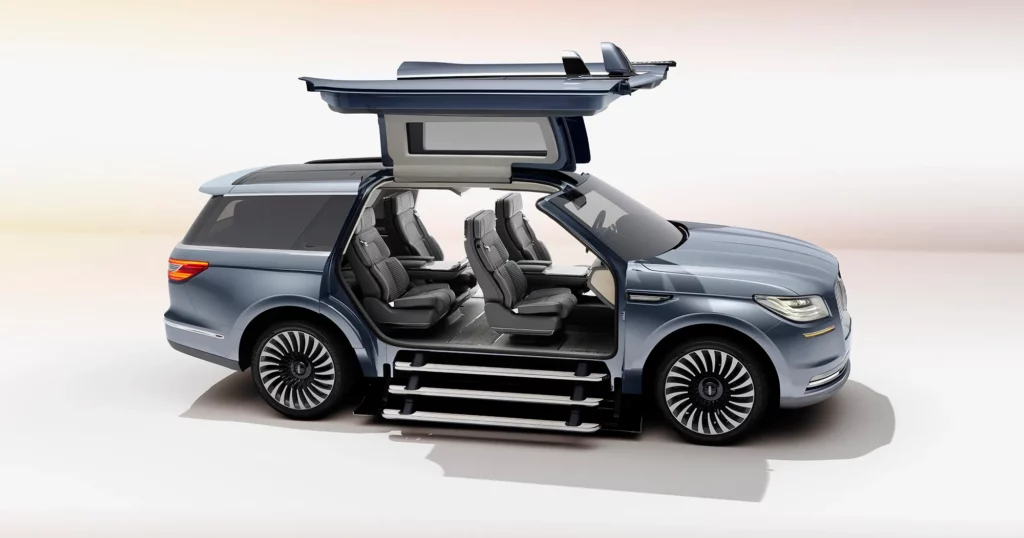
YahooNews (“Bigger cars are stalling progress on climate change, EPA study finds“):
American automakers and consumers are stymieing progress on cutting the carbon pollution that causes climate change, according to the findings from the Environmental Protection Agency’s 2022 Automotive Trends Report. Even though miles per gallon are gradually increasing within each vehicle weight class, the ongoing shift from sedans to trucks and SUVs, which are subject to lower fuel efficiency requirements — and to bigger trucks and SUVs than the ones that were popular in previous decades — canceled out much of the expected benefits.
Environmental and consumer advocates are expressing disappointment.
“The bottom line is fleetwide fuel economy didn’t improve,” Avi Mersky, a transportation researcher at the American Council for an Energy-Efficient Economy, said in a statement about the report, which analyzed data on cars sold in 2021 versus previous years. “That’s bad news for drivers at the pump and for the climate.”
“Some models got more efficient,” Mersky noted, “but with the automakers marketing large SUVs so heavily, they’re taking up more and more market share. The manufacturers are canceling out all the efficiency progress as they sell more large vehicles.”
This should not come as a surprise to anyone who has been on an American highway. Americans like big vehicles with lots of power and have for generations. Occasionally, when gas prices are very high for a sustained period, we’ll see a shift to smaller cars. But, when prices come back down, we go right back to bigger vehicles. And, as bigger ones become more fuel efficient, we buy even bigger ones!
The EPA sets average fuel-economy standards that require auto manufacturers to reach a certain miles per gallon for each class of vehicle. Partly as a result, since 1975, miles per gallon of cars sold in the U.S. have roughly doubled, cutting carbon emissions per mile in half. But the shift toward bigger models, which the agency allows to have lower average fuel-economy standards, has prevented those improvements from being even greater.
Last year, while the fuel efficiency in each weight category reached record highs, the shift toward heavier types of vehicles offset that progress. In 2021, all the new cars and trucks sold in the U.S. had the exact same overall efficiency, 25.4 miles per gallon, that was reached in 2020.
Again: vehicles are getting more fuel-efficient across all classes. We’re just offsetting that efficiency by shifting to ever-larger vehicles.
“In model year 2021, sedans and wagons fell to 26% of the market, well below the 50% market share they held as recently as model year 2013, and far below the 80% market share they held in 1975,” the EPA noted in the report. “Conversely, truck SUVs reached a record 45% of the market in model year 2021, and pickups increased to 16% market share.”
“Truck SUVs” refers to SUVs so large that they are classified as trucks, rather than light trucks, by the EPA, allowing them to meet a lower miles per gallon standard. As the Detroit Free Press reported in 2018, many new SUVs are often so big that they cannot fit into older houses’ garages. Their production increased by 6% in 2021, while sedan production declined by 5%.
Indeed, many companies are getting out of the car business altogether, shifting all of their energy to SUVs and trucks. I’m a longtime subscriber to Car and Driver and am amused at the constant stream of letters to the editor complaining that so much of the magazine’s focus has shifted to vehicles that aren’t cars at all.
But, again, the industry itself has shifted in that direction. Even venerable sports car companies are making SUVs nowadays. Porsche makes two of them, the small Macan and the larger Cayenne. Indeed, it’s been making the latter for 20 years now. Maserati, Lamborghini, Aston Martin, and Alfa Romeo make them as well. And Americans are snapping them up.
“The automakers are both making fewer cars, in favor of trucks, and making those trucks themselves bigger,” Mersky told Yahoo News. “It is also worth noting that even within these categories, vehicle footprint has been creeping upward. … There is no vehicle category where vehicle footprints (sizes) have remained steady or decreased. The average vehicle in all categories got larger. While most vehicle categories increased average [miles per gallon], the in-category rate of improvement was much lower than the standards would have required had there not been a large upsizing of the fleet.”
Most of my students drive four-door pickup trucks that extend far past a normal parking spot. That class of vehicle simply didn’t exist in my memory and was an extreme rarity even 25 years ago.
At the other end of the spectrum, even small cars like the Toyota Corolla or Nissan Sentra are quite a bit larger than their namesakes of 30 years ago.
While fuel efficiency regulation was started in 1971 to cut down on the conventional air pollutants like nitrogen oxide that come from tailpipes, it has become a key part of how the federal government attempts to reduce greenhouse emissions. Transportation is the single largest cause of U.S. emissions, and the United States has pledged in international climate change agreements to cut its emissions by 50% by 2030.
The Biden administration has finalized ambitious new increases in required fuel efficiency for model years 2024-2026, but climate experts and advocates are urging it to go further in the next round of standards, which will be proposed next March and will govern model years 2027 and beyond.
“The EPA could decrease the slope of the standards,” Mersky said, meaning that the difference in allowable fuel economy between larger and smaller cars would be reduced. And the agency could also create a minimum fleetwide average efficiency, so that if too many consumers switch to bigger classes of vehicle, the standards in that class have to be raised to meet the overall average.
“EPA would also be justified in adding a ‘backstop’ to these standards,” Mersky added. “This would be a minimum fleetwide fuel economy, which, if not met, would automatically tighten the fuel economy and emission standards on all vehicles.”
There is no magic wand that makes vehicles more fuel efficient. Probably the easiest solution is to raise gasoline taxes to levels comparable to those in EU countries, permanently making gasoline expensive. There is, of course, zero political will to do that.
I drove my late first wife’s Toyota Sienna minivan for years before trading it in on a 3-row SUV (a Mazda CX-9) three years ago. Both are reasonably fuel-efficient for what they are but there are certainly less gas-guzzling options out there that would suffice for my daily commute. But while driving alone is my modal driving situation, I often have as many as 7 people in the vehicle and, even if I didn’t, I’m over 6 feet and 200 pounds; small cars are not my friend. My wife drives a Mazda CX-30, which is a fantastic small SUV and more fuel efficient than mine but I find it uncomfortable for more than a short drive.
Rather than force Americans into cars they don’t like, the solution is rather obvious:
The Alliance for Automotive Innovation, which is the lobbying group for automakers, declined to comment for this story, but it pointed out that the industry is making progress in one key area: electric vehicles. There are now 83 electric-vehicle models available for sale in the U.S. Between 2020 and 2021, EVs’ share of U.S. new auto sales doubled, from 2% to 4%, and they are on pace to increase significantly again this year. In the second quarter of 2022, they accounted for 6.6% of new light-duty vehicle sales.
Americans actually want electric vehicles; they’re selling faster than manufacturers can put them out. There’s not yet a viable all-electric option in the 3-row SUV class—everything out there now or about to launch is too small and many are absurdly overpriced—but I’d probably be willing to take the plunge if there were. My daily commute is just under 30 miles each way and I only take road trips beyond the overnight charging range once or twice a year. And I live in a metro area with quite a bit of charging infrastructure already in place.
Pricing is going to be a problem for most people. For example, Mazda looks to be replacing the CX-9 with a slightly larger CX-90, expected to arrive early in 2023. It’s expected to be offered in a gasoline-only model and in an a plug-in hybrid. That’s an attractive option.
But here’s the problem:
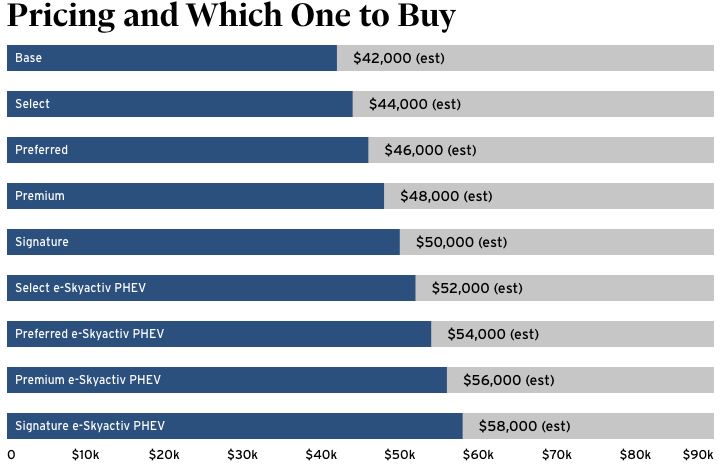
The entry-level PHEV model is expected to be $2000 more than the most expensive gasoline-only model. The premium PHEV is projected to cost $8000 more than the premium gasoline-only model. It’d take a lot of driving to save $8000 in fuel costs!
There are federal subsidies available to help offset that—good!—but the levels are complicated and phase out based on household income—bad! Amusingly, they actually incentivize buying larger vehicles:
To be eligible for the credits under these provisions, vans, sport utility vehicles, and pickup trucks must meet the additional requirements of not having a manufacturer suggested retail price (MSRP) above $80,000, and all other vehicles may not have an MSRP above $55,000.
Which seems odd!

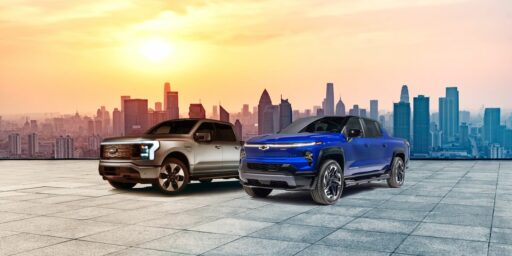


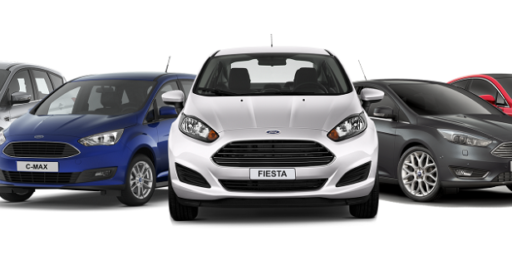
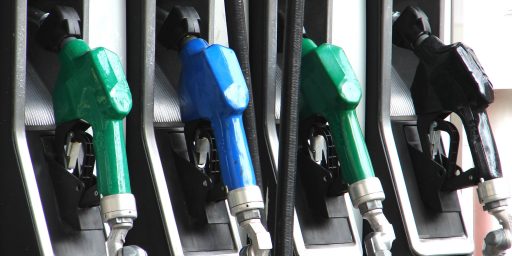
Just the tip of the iceberg, really.
– Consumers buying bigger cars.
– Communities protesting the installation of large-scale solar.
– Industry fishing groups protesting offshore wind.
– The reliance on rare earth metals for batteries/environmental challenges of establishing rare earth mines here in the U.S.
– Establishing state codes that phase out cleaner fossil fuels like natural gas before there’s sufficient replacement
– Communities protesting new transmission lines
I could go on and on. The general public does not understand how all of these pieces fit together. Before anyone jumps on me for saying that, I did work a number of years ago for an energy provider. They were trying to explain the need for new transformers and other line equipment, so they commissioned a survey to determine what the base level of understanding was. Most of those surveyed had no idea how electricity was generated and delivered to homes. This isn’t a criticism, it’s actually sort of amazing because it speaks to how dependable and reliable electricity is here in the US. But if people don’t have a firm grasp of the full process, explaining bits and pieces of how this all relates to climate change is going to be difficult.
“We have met the enemy and he is us.”
Raising gas taxes won’t stem the increasing size of vehicles. We’re already seeing the supersizing of EV’s with the Hummer tipping the scales at nearly 9000#. I can think of a few country roads that have bridges marked with that weight limit. Add to that a growing concern about the acceleration that some of these vehicles have. 6000# + with sub 3 second to 60mph acceleration but without the brakes to slow the vehicle.
Pretty much daily, Autoblog or Motorious has video clips of idiots losing control of high powered cars in urban areas.
What might work is a tax scheme where vehicles passenger vehicles above a certain weight pay a progressively higher, annual excise tax and vehicles below the weight get a tax rebate.
My understanding is that Freud is no longer considered valid by psychologists. But he sure seems to explain vehicle buying. I’m sitting above you. Mine’s bigger than yours. As a lifelong sports car guy, and mechanical engineer, it leaves me absolutely baffled. Weight is the enemy of everything good. The only saving grace is that so many smaller SUVs are really hatchback sedans.
James, how’s Car and Driver doing? I switched to Road and Track decades ago, back when Brock Yates ran C and D. They were fudging road tests outrageously in favor of advertisers. The classic was a comparative test of “Volvo like” cars. They wanted to pick the best car for people who bought Volvos. They picked an Olds 442 because it had the best quarter mile time. Not exactly a trait of primary importance to Volvo buyers. But R&T have turned themselves into a big, slick, lifestyle magazine. Sort of Cigar Aficionado with pictures of cars. Car and Driver still a car mag?
once electric vehicles dominate, and if electricity is cheap enough, we may see “cars” with 10wheels that can transport 50 people, used by one guy commuting to work with a blow-up doll so he can use the carpool lane.
@gVOR08: Gresham’s law is also at work. Even if you would otherwise prefer a nice sedan—which offers better comfort and driveability, often for considerably cheaper—to an SUV, when half the cars on the road are taller than you, it becomes harder to see. Plus, SUVs and trucks beat passenger cars in crashes every time.
C&D is an odd duck but it’s more useful to me than the competitors. I’m never going to buy an exotic sports car. I miss my old Z-350 roadster but it just makes no sense for me with kids.
But, yeah, it does funny things. Like the Volvo compare, they did one with 3-row SUVs a few years back in which, by all of their own metrics, the Volkswagon Atlas was the clear winner. The CX-9 was rated above it, despite a cramped 3rd row and no real storage when those seats aren’t folded down because, well, it’s a lot more fun to drive. And, having driven both, they’re right—and I ultimately bought the CX-9. But my 3rd row is only used occasionally and by small people. My wife’s grownish kids are all under 5’8′ and fit comfortably. But the inability to fit larger adults in the back—or carry a lot of gear—would be a dealbreaker for most customers in that segment.
I was thinking more along the lines of a procrustean solution (width and length). But I suppose EVs are a reasonable alternative.
Re EV pricing, this is yet another instance of upper middle class and rich [social group redacted] getting to purchase social absolution. Buy now and get the self-righteousness package for free.
The less wealthy are relegated to saying “no thanks” to drinking straws and shopping with filthy reusable grocery bags (that may not even be a net good).
Ps, I saw an Alfa Romeo Quadrifoglio the other day. Metallic gray. I’m not a car person, but that is a damn fine looking auto.
There is so much to unpack in this one sentence
To each his own but for my wife and me (5’1” and 6’1”, respectively) we vastly prefer a small car that handles nimbly and can stop much faster than a big one. Better to not get into an accident in the first place. One of our cars is a Mini Cooper which gets 40+ mpg on the highway, can maneuver and corner with speed and agility and stops shorter then. Anything else I’ve driven. Our second car is new and since we needed a tow vehicle we got the smallest one that met our tow weight requirement, a loaded Subaru Outback. Very luxurious with all the gadgets but drives like a tank.
@MarkedMan:
Alas, the current Mini is no longer mini
I have a Corolla that has never once broken down or given me any trouble (ie it has always run when I turn the key*) for almost 12 years now. I intend to keep it as long as it runs, unless electrics come down sharply in price.
*Well, except when the first battery died. But that hardly counts as a break down.
It’s worth looking at what is being advertised to American consumers. There’s not an immutable law of nature that causes Americans to like big vehicles.
Big vehicles have bigger profit margins for manufacturers and dealers.
@Kathy: “used by one guy commuting to work with a blow-up doll so he can use the carpool lane.”
That’s why he says he has the blow-up doll, anyway.
@Mimai: Your comment about the Alfa made me look it up. Meh… I was reminded of the line at the end of the chorus of Little Boxes: “and they all look just the same.”
@Sleeping Dog: While I’m sure the latest model Mini Cooper is larger than an original, the car on the right in the picture looks to be a Countryman which is classified as a small crossover/SUV.
My wife has a small fuel efficient car. (a ford something or other, gets 42 mpg on the highway) For any joint activities or light traveling we take her car and I use it for grocery shopping etc when it is available for me to use. I have a 2005 1/2 ton 4wd Dodge p/u that I actually use for what p/u s were made for. You know, hauling stuff, not for looking cool. I often find myself looking longingly at a 3/4 ton or 1 ton truck and thinking, “If I had one of those, I could haul a skid loader/tractor w ease and I wouldn’t have to pay $300 for delivery and pick up.” I could also haul a lot more gravel/topsoil/compost without the use of my utility trailer.
sigh… I just can’t justify it. Especially not at my age.
Anyway, if I had the money I would by an electric p/u w/o thinking twice about it. My current truck gets a whole 14 mpg. Fortunately about half the time I drive it no more than from here to Sullivan, which is a whopping 11 miles away. Sometimes up to STL to help my son with some project or to see my granddaughter wrestle.
I was going to note earlier that the issue of drivers buying bigger cars as fuel economy goes up is part of the problem of how to reduce the amount of CO2 in our atmosphere–or even to slow down the increase. To some degree, the problem really is a variant on the Tragedy of the Commons. Everyone gets more advantage from using fossil fuels than they get from reducing their use. Richer nations get more advantage than poorer nations and will suffer less impact from environmental damage. Win-win. Drill, baby drill!
And before someone suggests the impact of the hoards of poor coming from el Sur, let me note that guns were created to address encroachment problems of that sort. Well warfare, too, but still…
Jevons Paradox
@Dave Schuler:
In essence an increase in fuel efficiency is equal to a decrease in the price of fuel. In both instances you can travel further or run machinery longer for the same amount of money. So the effect is also the same.
@Just nutha ignint cracker:
The gaslight works on my car. But not on me.
I like my wife’s solution. You can have as big and powerful a car/truck as you want, but its bumpers have to be at the same height as everyone else’s. Which is determined by the plurality of small sedans, not by the monster-wannabes.
It’s amazing how much less appealing a pickup truck is when its bumpers have to be at a sensible height. It’s also amazing how many lives that would save.
Here’s the biggest thing I don’t understand from the EV marketing perspective: the maintenance costs are virtually non-existent. You have to take care of tires and a couple of other minor things but that’s about it. No constant oil changes, fluid changes, belt replacements, etc. Even at a more expensive sticker price, you save a lot over the lifetime of the car compared to a similar combustion engine car.
But how often do you hear about that?
@Mimai: Either way, the car’s still ordinary looking to me.
@Alex Knapp: It’s probably worthwhile if you’re keeping the car 10-15 years. If you’re only keeping it 4-6 years, though, you really don’t get into expensive maintenance. Aside from one set of tires and brake pads, which electrics also consume, the only thing I’ve really had to do with my CX-9 is oil changes. Even using synthetics, that’s maybe $200 a year.